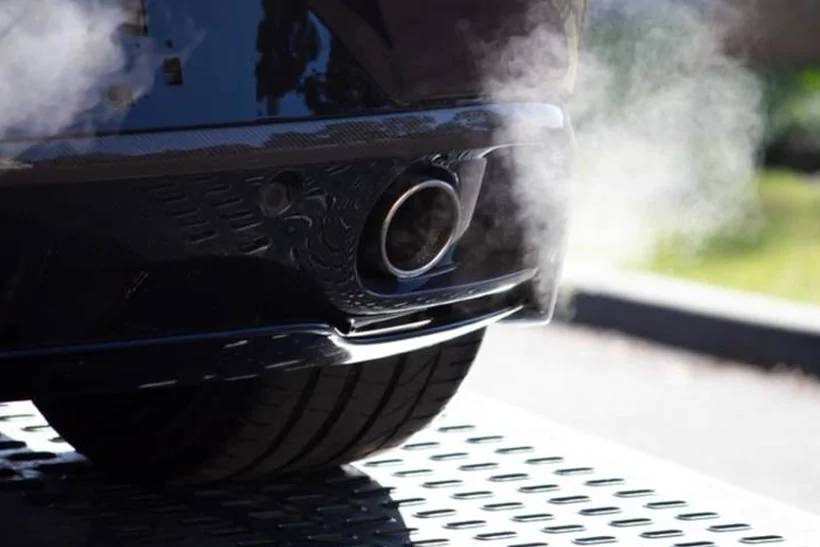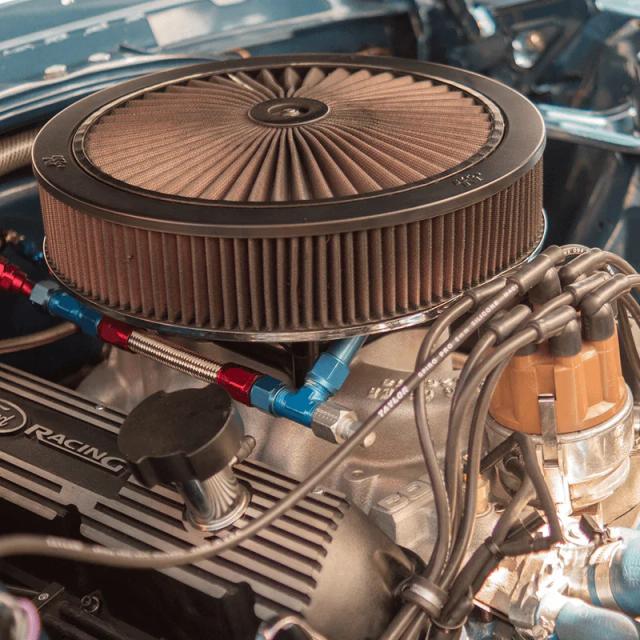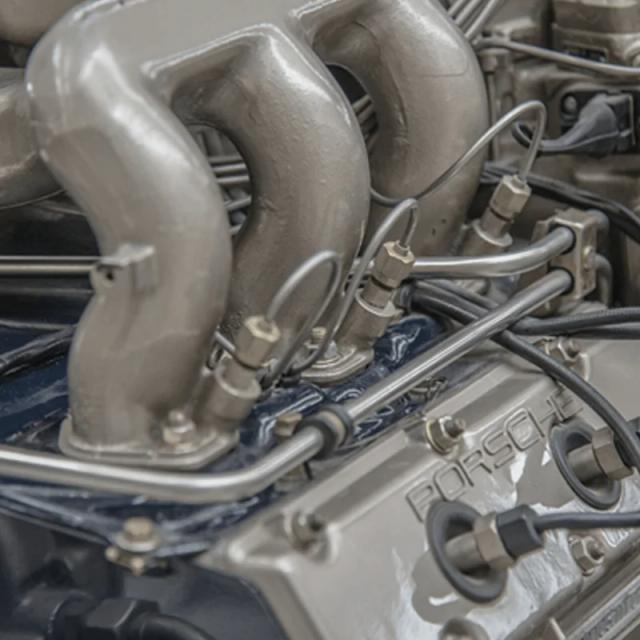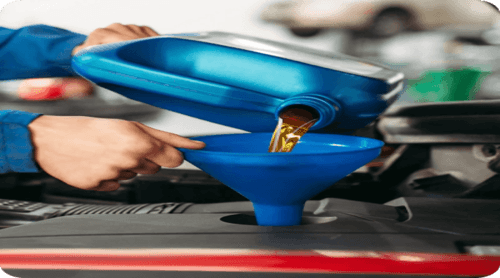
We rely on our cars for an awful lot, so there's nothing worse than when they show signs of being faulty or worn. With so many parts integral to a vehicle's smooth running, it can often be challenging to find the problem and diagnose it. But one unmistakable issue is a smoking exhaust. Although there are plenty of different reasons why your exhaust might be smoking, more often than not, this is down to problems within the engine.
Smoke from Exhaust Knowledge
As the engine is essential in getting your vehicle from A to B, it's important to diagnose the problem as soon as possible if you spot any signs of it not working. There are a couple of different types of smoke that can come from your exhaust, and leaving the problem unsolved can result in expensive or irreversible damage to your car. In this guide, we'll help you diagnose problems with your car exhaust and explain the possible smoke colours you might see if there's an issue. We'll cover:
How to Diagnose Car Exhaust Smoke
What Do the Different Car Exhaust Smoke Colours Mean?
White Exhaust Smoke
Grey Exhaust Smoke
Blue Exhaust Smoke
Black Exhaust Smoke
How to Fix a Smoking Exhaust
Car Exhaust Smoke Complete Know-How
How to Diagnose Car Exhaust Smoke
There are many tell-tale signs that your car has something wrong with it, and smoke from your exhaust is perhaps one of the most blindingly obvious. In most well-serviced cars, any visible emissions from the exhaust are unlikely to be anything sinister. However, it's always worth checking regardless. The more severe problems are typically found in vehicles that aren't regularly maintained and where the essential engine parts have been neglected. This can be down to leaks or build-ups that need to be addressed, plus many more possible causes, which we will explain in this guide.
Accelerating or Stationary?
Once you've found that you’re getting smoke from the exhaust, you'll need to consider whether it releases smoke when accelerating or when the car is stationary, as these can mean completely different things. For example, if it only happens when your foot is on the accelerator, your fuel mixture may be too rich within the combustion chamber. If your car is only smoking when it is stationary, it may be that it is warming up when it's cold outside and letting off some steam created by condensation within the exhaust system.
Inspect the Smoke
You'll then need to inspect what kind of smoke you see. There are so many different types of smoke you may see, and knowing which kinds might cause concern can save you a lot of time and money unnecessarily visiting garages.
For example, is it a cloudy white colour? Or a thick black smoke? Does it evaporate quickly or linger after it has come out of the exhaust? It's also worth considering what kind of car you have – diesel, petrol, or hybrid – as these will all react differently and, therefore, may put out different types of smoke to one another. Once you've looked at the smoke up close and identified its colour, you'll be in a better position to figure out what's causing the problem.
What Do the Different Car Exhaust Smoke Colours Mean?
There are various car exhaust smoke colours that you may see coming out of your engine, but the main ones are white, grey, blue, and black. Below, I'll take you through the possible exhaust smoke colours you may see and what they could mean.
White Exhaust Smoke
An exhaust smoking white is one of the most common exhaust smoke colours. It isn't usually something to be concerned about.
Generally, if this is a thin, white smoke that you see when your engine is starting up, it's most likely nothing to worry about. Many people may mistake this as something more serious, but most of the time, this can be attributed to the steam being released from your engine as it warms up during colder weather. Once your car has warmed up, this condensation should evaporate completely and run as normal.
It's imperative that your vehicle is given enough time to warm up; otherwise, it's at risk of building up condensation in your exhaust, which could lead to exhaust leaks and rusting. This can then create expensive problems further down the line.
If you have a hybrid model, there may be a delay when you see the white smoke or steam depending on how much battery charge you begin your journey with. But it still won't be anything to worry about in most cases.
Although your exhaust smoking white is more often than not a natural part of the exhaust system heating up, there are some cases to watch out for when it can point to something more important. Dense white smoke that forms when you're accelerating and stationary is likely caused by the coolant leaking into the engine. This can happen if your cylinder head gasket or intake manifold gasket is faulty, which can be costly. But leaving it will only exacerbate the problem and might cause your engine to fail, which would be even more devastating for your bank account or might mean your vehicle has to be written off. So, be sure to get this checked and fixed immediately.
Grey Exhaust Smoke
Grey smoke can usually be linked to your car being too thirsty for engine oil, or it could point to a leak, causing excess oil to burn within the engine. So, you'll need to inspect the engine oil levels at intervals to see how fast they seem to be going down. For many modern engines, this should be less than a quarter per every 5,000 miles of driving, but newer cars will consume much less.
You can find premium engine oil here. Just enter your reg number or make and model.
Grey smoke emissions might also be down to a faulty positive crankcase ventilation (PCV) valve, which is a device that usually draws back unburnt fuel to help control emissions. Like any other part of your car, the PCV can wear down over time, especially when it's cold outside. However, when this happens, your engine can burn your transmission fluid. Luckily, it's easy to check the fluid using the dipstick. If the fluid looks dark or smells burnt, it could be a case of changing it and your PCV so the problem doesn't occur again. But if the fluid looks fine and changing it doesn't solve the problem, you'll need to take your car to a mechanic.
If you drive an automatic car, it's worth knowing that grey smoke can point to a leak in the engine system, drawing automatic transmission oil through it. This can be a significant problem for your vehicle and will always require the help of a professional, so don't attempt to fix this yourself.
Blue Exhaust Smoke
Blue smoke can have causes that are closely linked with those of grey smoke. In most cases, blue smoke will signal that engine oil is entering the combustion chamber somewhere, meaning it's coating the exhaust rather than lubricating the moving parts as it should. This can happen for several reasons, including the natural deterioration of your engine components or another fault somewhere in the engine.
There are a couple of possible diagnoses for blue smoke coming from a car, depending on the condition and last service time of the vehicle. For example, if your car has a high mileage and you spot blue smoke coming from the exhaust, this might be a sign that the valve seals or piston rings have become worn. This can result in oil getting through to the fuel system. As well as being a threat to your important engine parts, this can be costly for you as the leak will significantly impact your fuel efficiency.
Blue smoke coming from the exhaust could also mean your modulator has failed. This is an integral part of the engine that controls the flow of the transmission fluid. If this fails, the fluid is sucked into the engine and starts to burn, creating the blue smoke.
If this occurs, you'll need to look at getting replacement seals. However, as a car can have anywhere between 8 to 32 valve seals, you'll need to take your vehicle to a professional so they can figure out which one needs replacing. As this process involves engine dismantlement, we would only recommend attempting it yourself if you're qualified.
You might also see blue smoke if you've serviced the car recently. This is usually down to putting too much oil back into the exhaust system, where it's now burning off. Alternatively, it could be caused by engine oil being spilt directly onto the exhaust while filling up, which is burnt as your car heats up in preparation for your drive. Your car should stop smoking after a little while, but if not, then you might need to go to a mechanic to have the other important engine parts looked at.
Black Exhaust Smoke
If you see black smoke coming from your exhaust, it could be down to a couple of things. As with most other exhaust problems, the reason for this could differ depending on whether you have a petrol or diesel engine. For petrol cars, black smoke from the exhaust could indicate that too much fuel is being burnt within the combustion chamber. This can happen when your engine does not get enough oxygen to mix with the fuel in the combustion chamber, which may mean you need to change your air filter.
In diesel cars, it may be that the diesel particulate filter (DPF) has accumulated soot deposits over time. This vital part of a diesel engine is designed to trap debris from emissions before it's released out of the car's exhaust. These soot build-ups usually occur when the car is continuously being driven at lower speeds, but a warning light should show if this is the case. Similarly, black smoke could signal that your intake manifold gasket is blocked.
How to Fix a Smoking Exhaust
As the engine is such an integral part of your vehicle, it's crucial that you try to diagnose and fix any issues with it immediately. If you don't have much car knowledge, then we recommend taking it to a car technician who can sort it properly.
Depending on what causes the smoking exhaust, you may be able to carry out the fixes yourself, assuming you have some experience with repairs and feel confident about doing so. Below, I'll explain the possible fixes for the different colours of smoke you may see.
Clearing White Exhaust Smoke
Thick, white smoke that doesn't stop once your car is heated correctly typically points to a crack in the exhaust system. So, it's important that you take a look under the bonnet to find where the problem is, as leaving it can make for an expensive trip to the garage later down the line.
It'll help to monitor how much coolant your vehicle uses if you suspect a problem. So, be sure to open the coolant reservoir and check the levels are correct. If your car uses more coolant than average, there could be a leak somewhere. However, be cautious that even if your car's coolant levels look normal, it's still possible that you could have a leak. This means a thorough check of the engine must be done. If you aren't qualified to do this yourself, you'll need to take this to a mechanic.
White smoke from a diesel exhaust will signal that the diesel fuel isn't burning correctly inside the combustion chamber due to a lack of heat. This can be down to a clogged fuel filter, poor fuel injector pumptiming or even backed-up cylinder head valves, so you'll need to have a professional clear these.
Clearing Grey Exhaust Smoke
If you think the grey smoke is being caused by a faulty positive crankcase ventilation (PCV) valve, you're likely to see the burnt oil that's causing the emissions in the engine. You can also check to see if it's obstructed by shaking the valve to see if it rattles. If it doesn't, or if there's suction from the hose, then you'll know it's the PCV valve that's been affected. So, the first thing you'll need to do is to change the oil. If you've never done this before, don't worry – we have a helpful guide to changing your oil that breaks it down easily for you, even if you've never done this before.
Next, you'll need to make sure you change any faulty PCV valves. This is one of the more straightforward maintenance processes you can do yourself, as it just requires you to remove it from the valve hose and replace it with the new one. If you're still having issues after this, make sure you take your car to a professional to check over.
Clearing Blue Exhaust Smoke
Blue smoke can be caused by a stuck positive crankcase ventilation (PCV) valve, as this will keep mixing oil in your exhaust system with air and other gases. The combustion of this mixture will cause the blue smoke. To repair this, you'll need to locate the tube which links to the intake manifold and follow it back until you can see the PCV valve. Remove it and replace it with a new one.
If you think the blue smoke is down to some worn or clogged engine elements, you'll need to look under your hood. As a full cylinder head can be one of the parts behind the smoke, you'll need to know how to clean this. Simply remove the valve cover and clean it and the drain holes thoroughly, then recheck and reassemble them.
Blue smoke can also be down to a failure of the modulator. This important car part is designed to control transmission shifts in older vehicles to ensure the fluid isn't sucked up by the engine, which then burns and produces blue smoke. If you suspect this is the case, you'll need to locate the modulator at the rear of the transmission. You'll know when you've found this as it's connected by a small rubber hose, at one end of which is a steel tube which rises up to the engine. If you need help finding it, check your owner's manual.
Clearing Black Exhaust Smoke
If you've got black smoke coming out of your petrol car, you'll need to check or replace your air filter. If this appears fine, you should also check the fuel injectors to see whether they're clogged, as well as the fuel pressure regulator. However, this can be tricky if you're not qualified, so I'd recommend taking your car to a mechanic to look at it.
For diesel cars, you'll need to ensure the fuel and air are mixing properly to prevent soot from forming, and the best way to do this is to drive the vehicle faster. Of course, this needs to be done sensibly, and you should always stick to the speed limits for any given road. But you can help to clear it by going for a long drive on a quiet road or dual carriageway where the national speed limit applies. This should remove any build-ups, which may appear as a puff of black smoke – it may even leave soot on the road behind you. After this, your engine should run much smoother and get rid of any warning lights that were previously illuminated. If the light seems to come on more often, a diesel engine might not be the best choice for your driving style.
If you're considering buying or have recently purchased a used diesel car, it's essential to check that the diesel particulate filter (DPF) is still embedded into the exhaust system. This is because many unreliable garages looking to sell quickly will remove this to stop the problem of black smoke but doing so can mean the vehicle will continuously pump out black soot and is more likely to fail its MOT, so this can be incredibly costly for you over time. This is yet another reason why it's especially important to buy from a reputable dealer.
Car Exhaust Smoke Complete Know-How
Diagnosing car exhaust issues isn't always straightforward, but with this handy guide, you should find it easier to work out what's causing your car to smoke so you can get on with fixing the problem. Whether you're a tradesman who's a dab hand at fixing up cars or have a lot of experience working on your car, you'll surely find plenty of helpful tips here to assist you with the job.
At GSF Car Parts, we pride ourselves on supplying quality parts for all car makes and models. This includes everything from essential engine parts to service products, lubricants and fluids, and even tools you may find helpful for repairs. You can use our product-finding tool to discover the most compatible pieces for your specific vehicle make and model.
We have plenty of other helpful guides in our knowledge hub to help you understand problems you could face with your vehicle and how to fix them when they arise.
It's always best to seek the help of a professional before attempting to work on any essential components of your vehicle, such as the engine. So, if you're not confident about carrying out the repairs yourself, take your car to your local garage so a trained mechanic can remedy the problem.
Shop Engine and Exhaust at GSF Car Parts Online and In-Store
All our Engine and Engine Parts are from trusted brands in the motoring industry, so you can count on them to be reliable and of excellent quality. Plus, our low-price promise means you can always expect great value, too.
We offer free UK delivery on all online orders over £25, plus 60-day returns*. We also know you want to get your car up and running as soon as possible, which is why we offer a Click and Collect service that allows you to get your new engine and exhaust part in just an hour.
So, buy engine and exhaust parts from us with confidence today. Or if you're close to one of our 180 store locations across the UK & Ireland, drop by. Our experienced staff will be able to direct you to the correct part for your vehicle.





